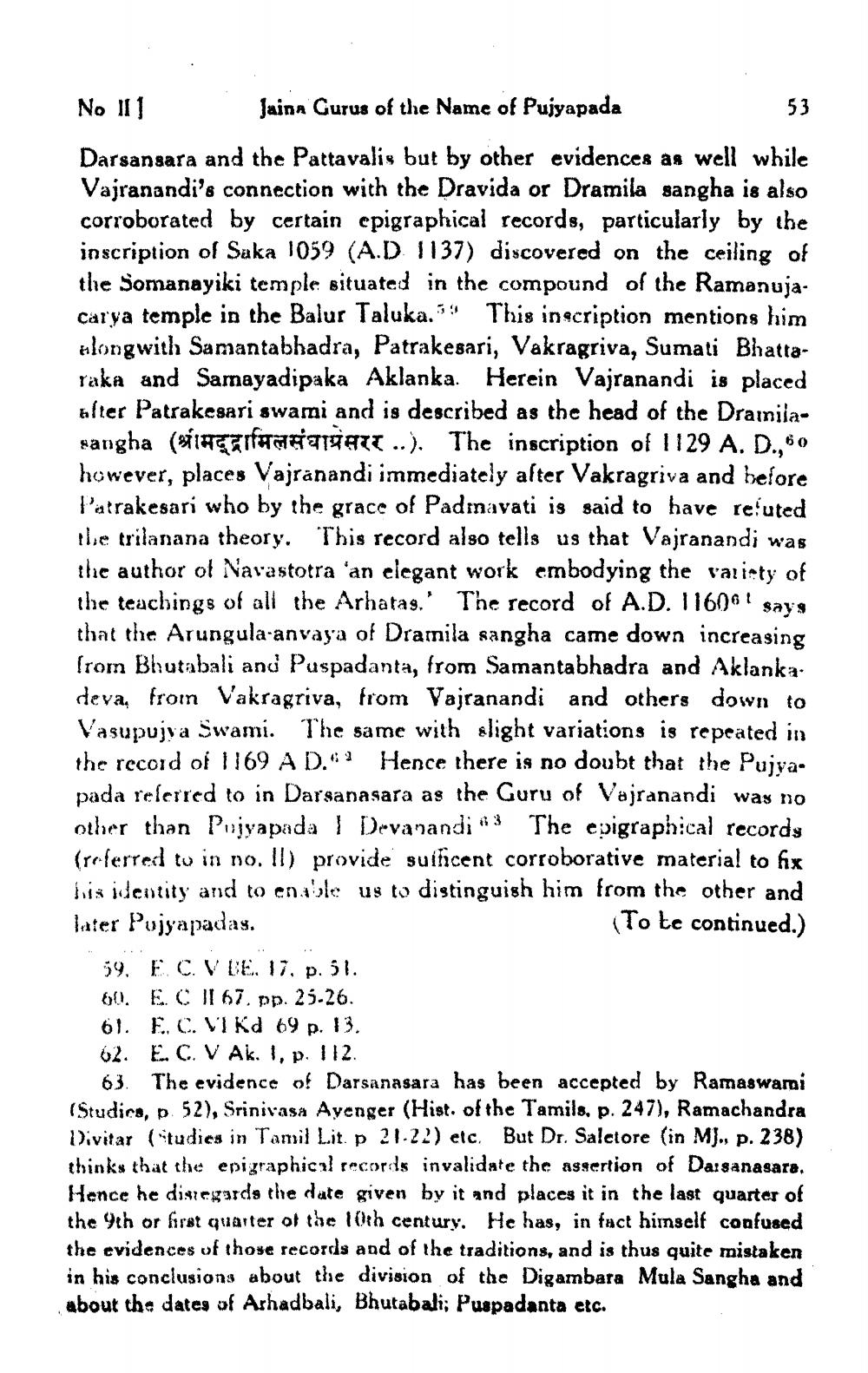________________
No II1
Jaina Gurus of the Name of Pujyapada
60
Darsansara and the Pattavalis but by other evidences as well while Vajranandi's connection with the Dravida or Dramila sangha is also corroborated by certain epigraphical records, particularly by the inscription of Saka 1059 (A.D 1137) discovered on the ceiling of the Somanayiki temple situated in the compound of the Ramanujacarya temple in the Balur Taluka.59 This inscription mentions him alongwith Samantabhadra, Patrakesari, Vakragriva, Sumati Bhattaraka and Samayadipaka Aklanka. Herein Vajranandi is placed after Patrakesari swami and is described as the head of the Dramilasangha (life..). The inscription of 1129 A. D., however, places Vajranandi immediately after Vakragriva and before Patrakesari who by the grace of Padmavati is said to have refuted the trilanana theory. This record also tells us that Vajranandi was the author of Navastotra 'an elegant work embodying the variety of the teachings of all the Arhatas.' The record of A.D. 11606 says that the Arungula-anvaya of Dramila sangha came down increasing from Bhutabali and Puspadanta, from Samantabhadra and Aklankadeva, from Vakragriva, from Vajranandi and others down to Vasupujya Swami. The same with slight variations is repeated in the record of 1169 A D. Hence there is no doubt that the Pujyapada referred to in Darsanasara as the Guru of Vajranandi was no other than Pujyapada Devanandi 43 The epigraphical records (referred to in no. II) provide sufficent corroborative material to fix his identity and to enable us to distinguish him from the other and later Pujyapadas. (To be continued.)
59. F. C. V BE. 17. p. 51. 60. E. C II 67. pp. 25-26. 61. E. C. VI Kd 69 p. 13. 62. E. C. V Ak. 1, p. 112.
53
63. The evidence of Darsanasara has been accepted by Ramaswami (Studies, p. 52), Srinivasa Ayenger (Hist. of the Tamils, p. 247), Ramachandra Divitar (Studies in Tamil Lit. p 21-22) etc. But Dr. Saletore (in MJ., p. 238) thinks that the epigraphical records invalidate the assertion of Dasanasara, Hence he disregards the date given by it and places it in the last quarter of the 9th or first quarter of the 10th century. He has, in fact himself confused the evidences of those records and of the traditions, and is thus quite mistaken in his conclusions about the division of the Digambara Mula Sangha and about the dates of Arhadbali, Bhutabali; Puspadanta etc.




